Reasons Why a Campervan Was the Best Option for Us
This is Part 1 of a series we are doing which chronicles the path to our first campervan. In this series, we hope to lay out all of the “dirty details” of the process we went through to get into our first campervan and the fixes and repairs we tackled right off the bat.
We will provide helpful info on the campervan options available, potential pitfalls, the costs to prepare for, the hoops we had to jump through, and everything in between. We hope you enjoy journeying through this with us…and learning something valuable along the way as you consider your own purchase!
Fun fact: I started writing this post in early September 2021, expecting it to be the first of many in a series that would walk you through our campervan decision and purchase process as it happened.
I expected that we wouldn’t be making a purchase until early 2022 at the earliest. But sometimes, things just have a way of moving faster than you expected (especially in our life, it seems).
We stumbled across the perfect campervan for us to get started with (2018 Carado/Hymer Sunlight Van One with 40k miles), raced through the financing process, and brought it home on September 16, 2021. Wow! Less than one week total. It was so fast it made my head spin, there’s no doubt about that.
So this post will be sharing the details of why we made this decision and what the (rapid) process looked like for us.
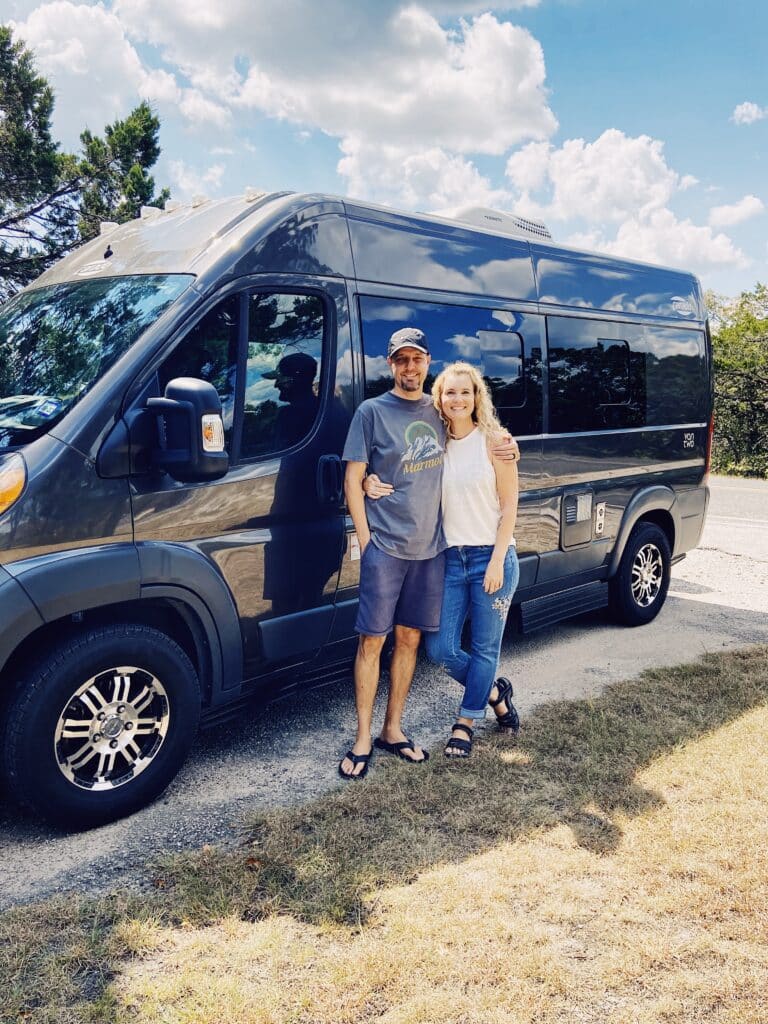
If you’ve been following our life journey for a while, you know that we’re not afraid of new and unfamiliar things. In fact, there’s a small chance we may be addicted to spontaneous adventures. But that’s another discussion.
When we decided to start full-time RVing, we sold our family home and most of our possessions within a few months. We dove head-first into the full-time RV life despite having ZERO RVing experience. No big deal.
After 17 months of traveling, we realized it was time to return to a home with a stable address. We wanted to get our youngest son through high school. So we landed in a 2-bedroom apartment for a couple of years back in the Austin, Texas area.
And then in late 2020, we got “the adventure itch” again (there’s no cream for that). So we each packed a couple of suitcases and headed to Hawaii. We stayed in Kona on the Big Island for eight months. It was a beautiful and challenging experience that we are extremely grateful for.
During our time on the Big Island, we had the chance to rent an awesome campervan for a couple of nights. And that, my friends, really started the fever inside of us (there’s no pill for that). Because we truly loved that experience and felt “at home”.
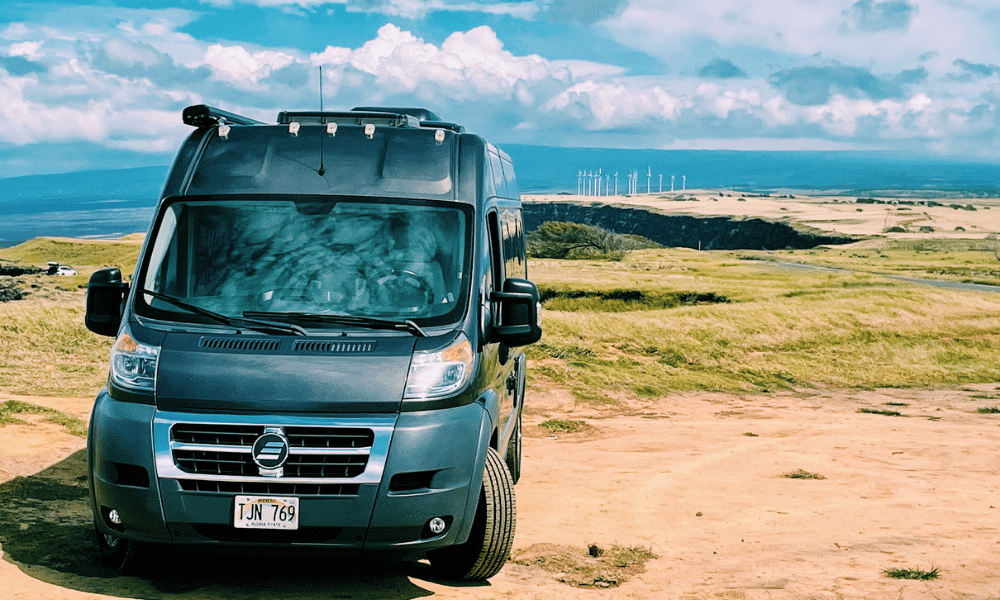
In July 2021, we returned to the Austin, Texas area and are renting a comfortable 3-bedroom, 2-bath home that feels HUGE. And perfect for this stage of our lives. (Even if it does involve yard work. Gasp.)
Why Did We Choose A Campervan?
I’ll be honest with you: Up until we made our first campervan purchase, I was still going back and forth on this.
Some days, I was certain that the campervan option was the best one for this “nearly empty nest” phase of life that we have entered. A campervan is simple, it’s small, it’s convenient. We can take it just about anywhere we could desire to go with very few complications or hindrances. All things that I love.
To Van or Not to Van
But I still had days where my more practical self seemed to be winning the argument. My practical side says, “Those friggin’ things are unreasonably expensive!”
That side also balked at the idea of joining the trendy bandwagon of campervans. Not only because the admission price is high, but also just because I consider myself “anti-trendy” and always question following a trend like that.
Trends are expensive, and this one is no different. You should know that going in. But there are “entry-level” options in the campervan space that make it realistic to pursue for many folks out there. That is what made this path work for us.
Now it’s time to go into more detail and break each of those pieces I touched on out into their own section. Hopefully, this will help you arrive at some level of objective reality as you consider whether a campervan is the right path to pursue for your next RV purchase.
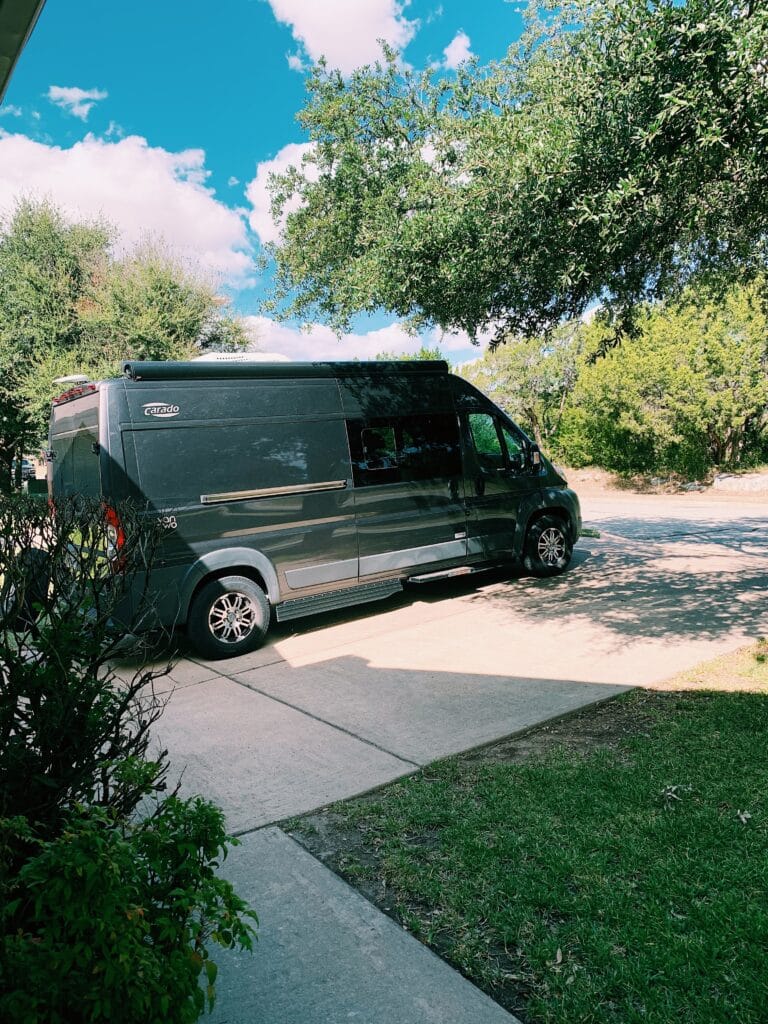
Simple
Not many things have been very consistent in my life over the past several years.
Since we decided to hit the road as full-time RVers in 2017, there have been more changes and pivots than you could possibly imagine. It seems we have been in some sort of transition every since. (See the quick recap of these last few years in the opening paragraphs above.)
But one thing has remained consistent for me: The desire for simplicity, even in the midst of the complications that transition can bring.
Comparing Our Options
We considered all of the different and potentially suitable RV options available to us for our next round of adventures (truck camper, small travel trailer, small Class C, Class B, etc.). Those Class Bs and campervans seemed to emerge as the simplest option available to us for several reasons:
- A campervan under 20 feet long could easily be parked in our driveway, stocked and plugged in and ready to roll out of town for an adventure at the drop of a hat. (The rig we purchased is actually shorter than the long bed RAM 2500 that we pulled our travel trailer with on our full-time RV journey!)
- No need for additional cost and hassle of storing the RV at a separate location and having to transport back and forth before and after trips.
- No need for two purchases (truck as towing vehicle plus a towable). Since we owned a Honda Accord already, and I really didn’t have any desire to drive a truck again, going with a campervan allowed us to just navigate a single purchase (even though it is a large luxury purchase) to get into our next rig. And as a bonus, the van can serve as a second vehicle for us around town. It can easily navigate any street and can be parked in just about any standard parking space.
- Relatively few “moving parts” compared to the larger RV options. We weren’t looking for luxury with this purchase. We were looking for adventure, mobility and the freedom to see a sign as we traveled down the road and say, “Let’s go check that out!” For us, the fewer “bells and whistles” the better this time around. No slides to deal with. Not too many things to stress over breaking. Just a cozy and straight up camping adventure with the necessities along for the ride.
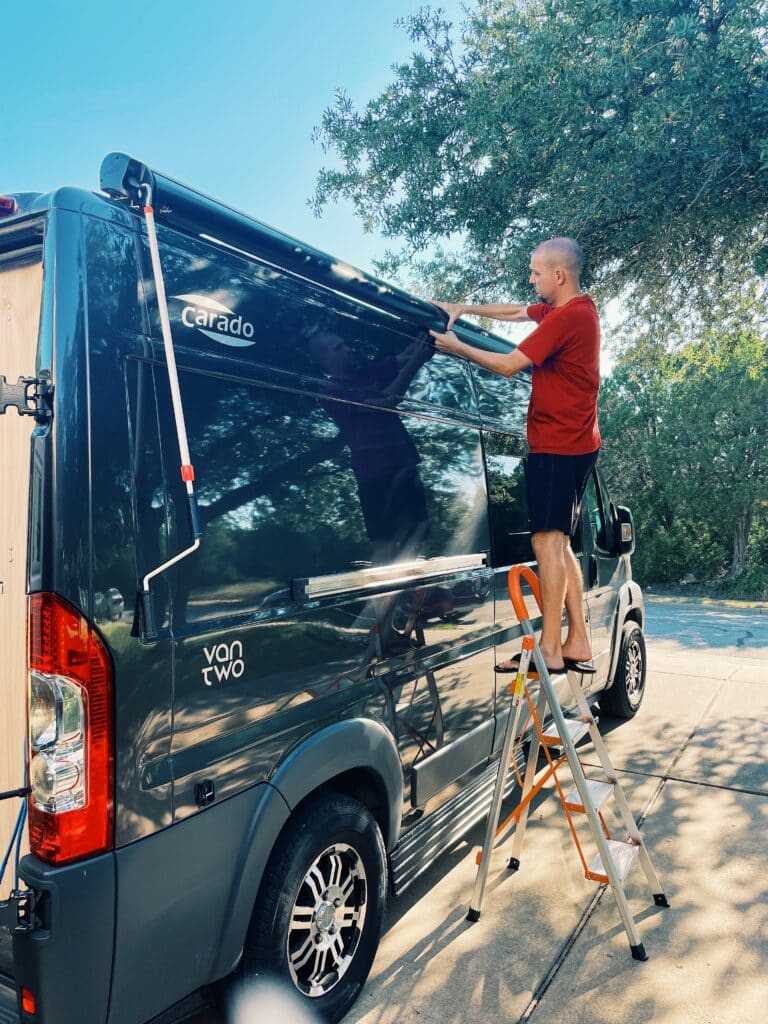
Summing It Up
Overall, I’m convinced this did end up being the least complicated route into our next RV. Honestly, I didn’t expect it to be. That’s why I was hesitant to pursue it at first. But the financing went incredibly smoothly and quickly and we got a great rate to help keep the overall vehicle cost down.
Manageable
When we hit the road in our long bed RAM 2500 truck with a 26-foot travel trailer (30-foot with tongue) in tow in 2017, I had very little towing experience. And when I say very little, I mean very little. (The only thing I had less experience with was RVing…we were complete noobs!)
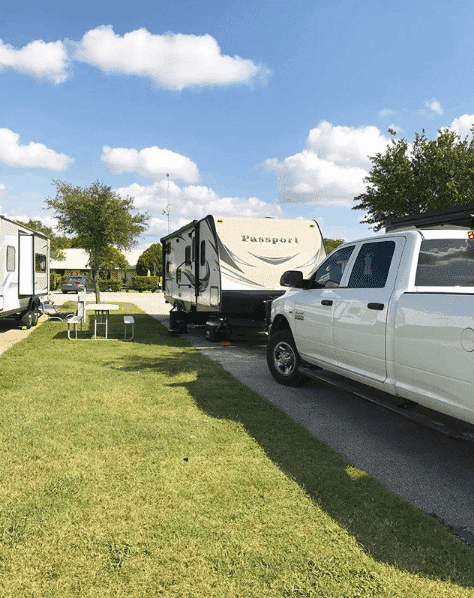
So you can imagine that my stress level was pretty high when we headed out, especially those first couple of months. Travel days were exhausting and always culminated in the challenge of getting my brain in gear to back that trailer into our camping spot for the night.
Say Goodby to the “Backing in Blues”
Sometimes my brain cooperated with me and I was able to slide the trailer into our spot on the first try. Other times, when I was especially exhausted from the day’s travel or the site was particularly challenging, I struggled quite a bit with the backing portion. Which way is that steering wheel supposed to go again??
But whether we had a smooth travel day and backing experience or not, I was always completely exhausted mentally when it was all said and done. All I wanted was a NAP after 4-5 hours of driving.
Luckily, after driving that travel trailer 35,000+ miles, we never had a collision of any kind. (But one or two close calls.)
With the campervan, it’s a completely different experience. At just 19.5 feet long and only 9.5 feet high, the stress level is far lower. With nothing in tow, we can easily move at freeway speeds without any issue and without any restrictions in any state. We can get to our next location with less stress, less mess, and more life left in us for exploring and enjoying.
Small and nimble. That works for us.
Convenient
I’ve covered some of the convenience points of the campervan above but let me just run through them all with a quick list for you and add some extras as well:
- Able to park easily in our driveway at home.
- Ready to roll out for an adventure at a moment’s notice.
- Able to use the campervan as a second vehicle for the family, to buzz around town in a pinch.
- Opportunity to easily “moochdock” with many friends and family in their driveways (normally free of charge).
- Able to fit into literally any RV site with plenty of room to spare.
- No need to track down 50 amp electrical connection when traveling (common for 5th wheels and some travel trailers). This campervan has a 30 amp electrical system. but you can operate any component (including AC) on just a dedicated 20 amp circuit. Overnight options galore!
- No need to tow a smaller vehicle behind the RV for getting around town.
I will probably come back and add to that list as we really start to get out there and adventure in this little beauty. But for now, that’s a great start to help you see just how convenient this mode of travel really is.
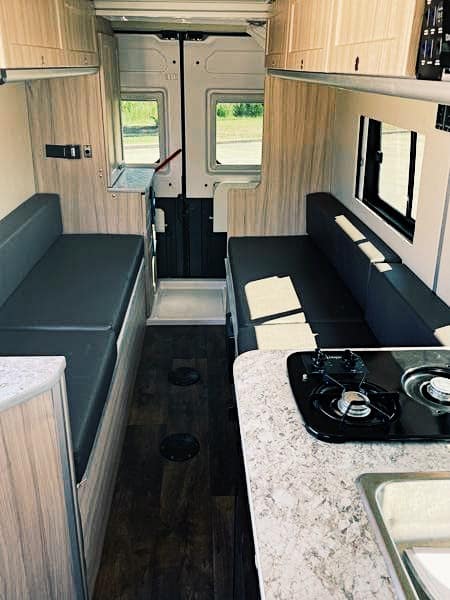
Easy Access to (Just About) Anywhere
When I think back to some of the tight squeezes I navigated with our 50-foot total setup (20-foot truck, 30-foot trailer), I literally cringe.
One experience, in particular, comes to mind: Vancouver, British Columbia.
We were only about 5-6 weeks into our full-time traveling, so I was still getting the hang of that backing thing. We booked a stay at an RV park near the hustle and bustle of the Vancouver urban center. The roads and bridges to get to the RV park were challenging enough (gulp).
But when I saw the small site I was supposed to park in, and the narrow drive that I had to work with, I almost choked.
And I almost gave up after the first six tries or so. (I don’t remember how many tries it ended up taking, but I wouldn’t tell you even if I remembered. Too embarrassing.)
It. Was. So. Stressful. And honestly, they never should have booked us in that site in the first place.
Bottom Line? Less Stress
The point of all of that is to say that a stressful situation like this would never develop in our campervan. It will be able to navigate urban centers and cramped RV parks like a champ. I have no doubt. (Not that I want to be in cramped RV parks too often, mind you.)
So what types of places will we not be trying to access in the campervan? Off-road locations that take us down winding dirt roads with the hope that we will find a hidden gem campsite.
No, she is not 4-wheel drive and does not have the ground clearance for that. So on this front, we will play it safe and stick mostly to paved roads. And who knows…maybe our next purchase will be a true “off-road ready” van to take us to new frontiers! I wouldn’t rule it out.
I love easy access…but I love cutting travel expenses even more (see below).
(**Side Note: Speaking of less stress, we highly recommend you do some research before choosing an insurer for your campervan or RV. There couldn’t be anything much more stressful than getting in a major RV accident and then finding out that your insurance carrier is not going to cover all of the costs! Don’t let this happen to you. And the newest “kid on the insurance block” that you’ll want to check out? Roamly. It’s an insurance company built by RVers for RVers, to take care of many of the headaches you can potentially face with an RV insurance claim. Get your quote today!**)
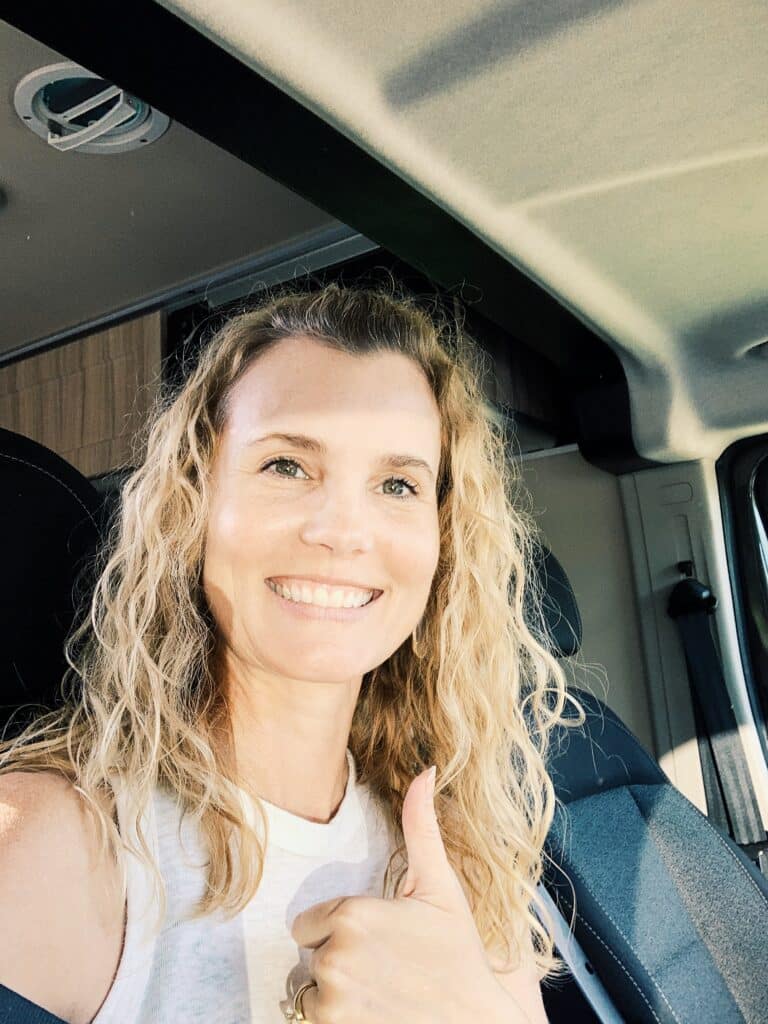
Economical Trips
We can actually look at a few different economic aspects of owning and traveling in a campervan versus towing a travel trailer. And not surprisingly, in every case, the campervan is going to come out ahead.
Of course, that’s not a huge surprise because of the smaller size. But let’s look at the details of the differences so you can really see the big picture.
Fuel Costs
When we were pulling a 26-foot travel trailer around the continent, the 5.7-liter V8 engine in our truck averaged about 8-9 miles per gallon (MPG) across all types of terrain and landscapes. (Just FYI, our loaded travel trailer weighed around 6,200 lbs. and we had 4-5 people in the truck at all times.)
Yes, it hurt. (I’m looking at you, California.)
In contrast, our 19.5-foot campervan is going to average 17-18 MPG. Yes, our fuel costs will be cut in HALF! And yes, I might be just a little excited.
When you are traveling full-time, those fuel costs seriously hit you hard in the pocketbook. It was our second largest expenditure during our travels, coming in behind RV park and campground fees at #1.
But even with us just traveling on a monthly basis or so, it will still make a massive difference in our budget.
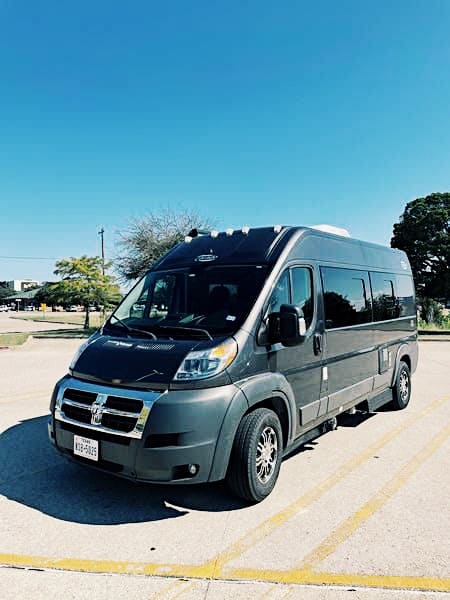
RV Park and Campground Fees
As I just mentioned, RV park and campground fees were our #1 expense during our travels. And this was despite the fact that we had a Thousand Trails Camping Pass that saved us a ton of money.
I recommend you go read all about the camping memberships we actually used on the road before you make your purchases.
The passes and memberships for RV parks and campgrounds were absolutely great to have. But as I’ve said many times, I always wished we had more of an opportunity to escape the RV parks and campgrounds more often and just boondock somewhere for free instead.
Our travel trailer wasn’t equipped for that, unfortunately. If it had been, I believe we could have slashed our park and campground fees by 30-40%, saving us thousands of dollars.
And with the campervan? Well, we do have a much smaller size rig that can fit anywhere (Harvest Hosts locations, driveways of friends, etc.). On top of that, we have solar panels, an underhood generator that charges the house batteries while we drive, and a battery bank that will allow us to be off-grid for a couple of days with no problem.
What does all of this mean?
More adventure. More options. Less money.
Economical and adventurous sounds like the perfect duo in my book!
Can You See Why We Are So Excited About Our New Campervan?
The truth is that we haven’t even had a chance to take a “maiden voyage” in our new campervan yet. We just brought her home about 10 days ago as I write this.
But that doesn’t make me any less enthusiastic about this choice and about the adventures in front of us.
Because of the simplicity, manageability, convenience, increased access, and affordability of the campervan, it’s impossible to see how we could regret this decision.
The good news is that you will be able to watch how this all shakes out! We will continue this Campervan Questions series as we get to know our new rig and we will also be posting helpful and informative new content as we visit new destinations in the months to come.
The future in this campervan is looking SO bright, my friend! I hope you’ll come along and watch how it all plays out.
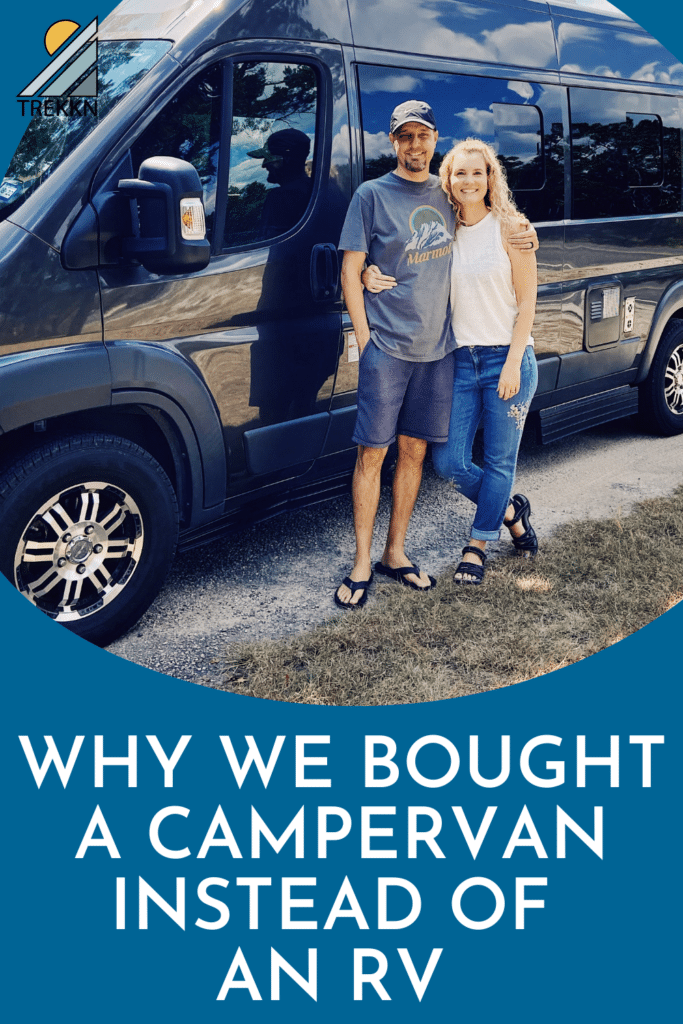
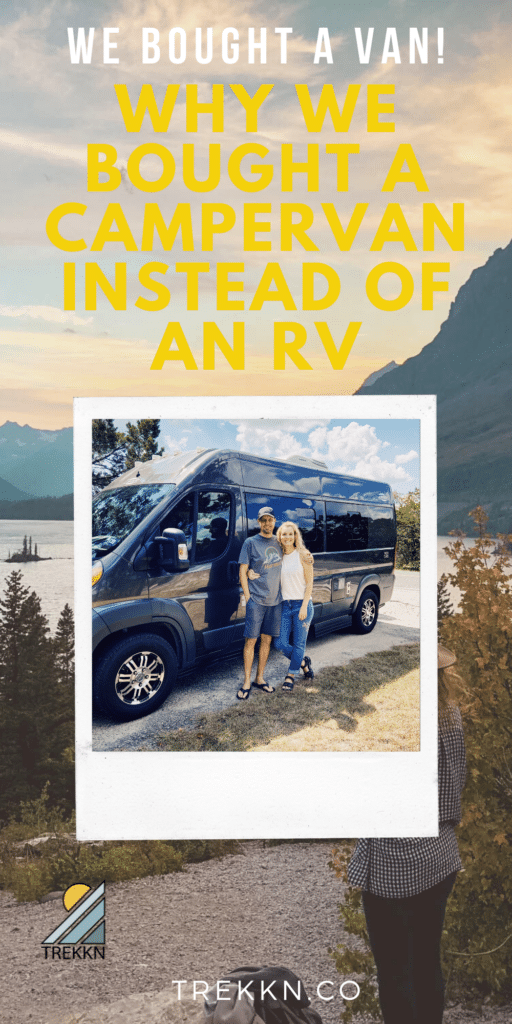

Todd loves a competitive game of table tennis, a breathtaking hike, and exploring new places. He lived and traveled in an RV with his family as they traveled throughout much of the US and parts of Canada. Todd has extensive knowledge about RV travel, safety, and accessories and has shared many of his stories here on TREKKN. When he’s not busy launching and building small businesses, you may find him staring at pictures of Glacier National Park (probably his favorite spot on earth).
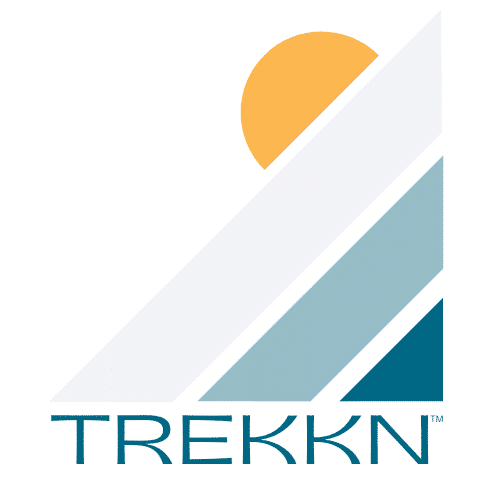

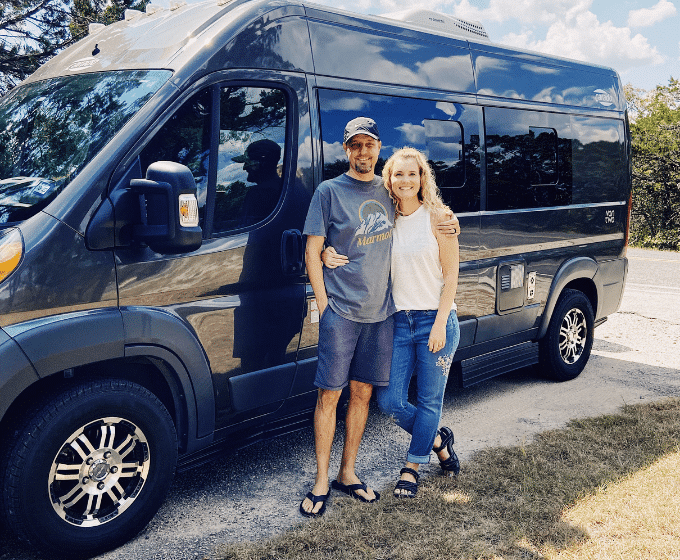
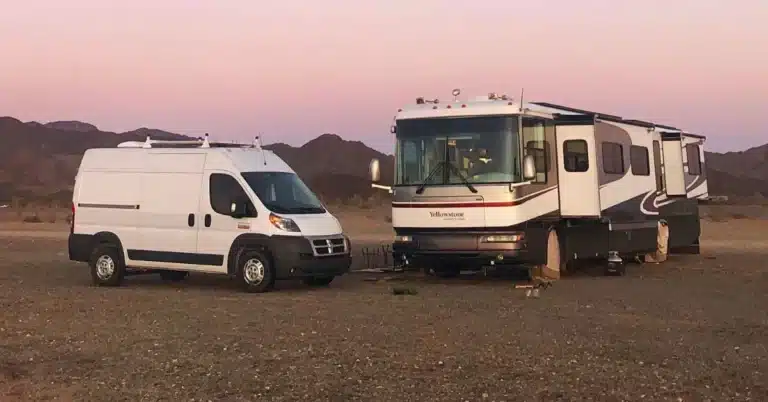

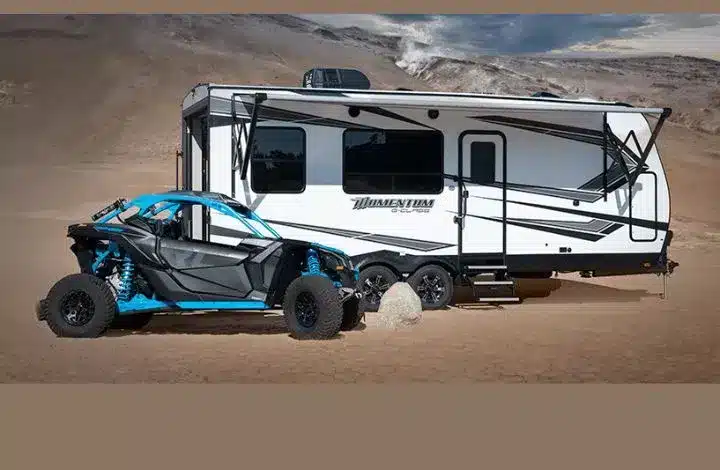
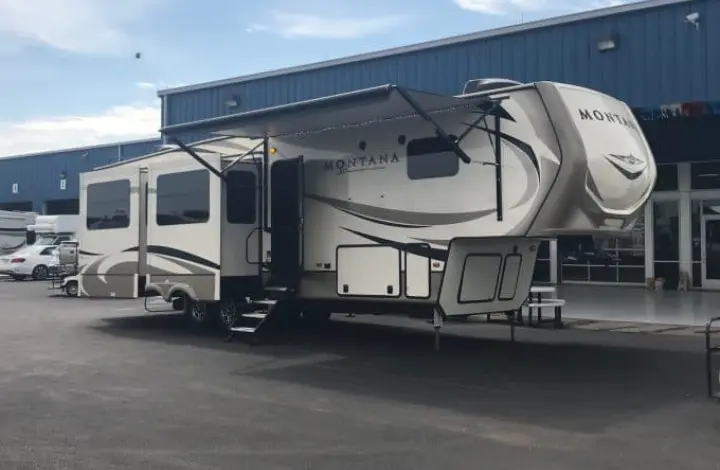
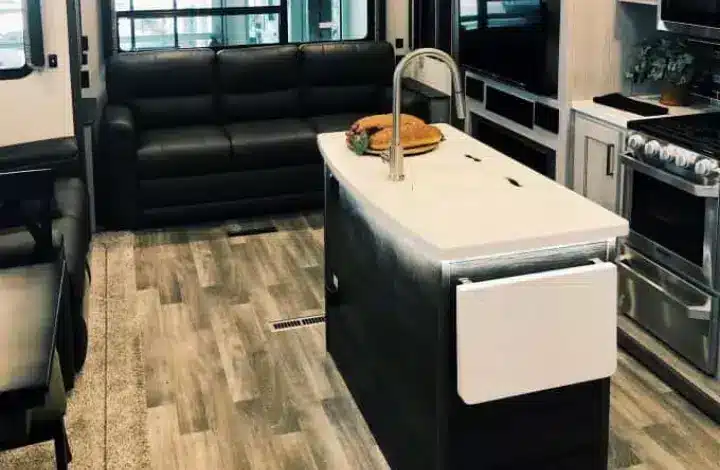
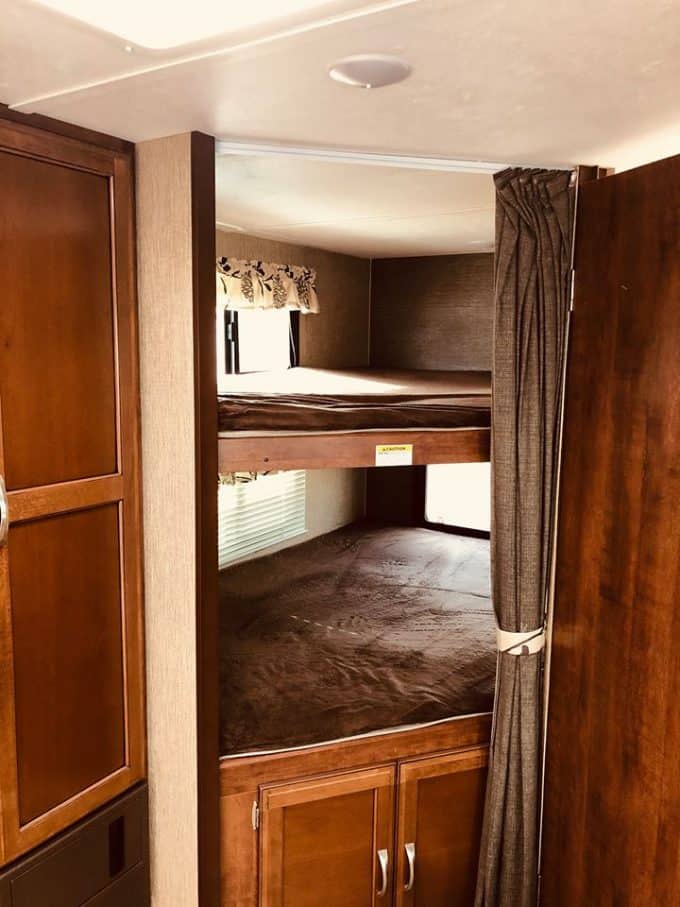
Hi Todd! My husband and I are looking into purchasing a van and renovating it as well! We live in ATX, and soo far the idea feels…. overwhelming? exciting? Hearing from people like you helps us make sense of it all a little more.
Hey Jillian! Glad to hear our experience and perspective has been a bit of a help for you.
But…it doesn’t eliminate that intoxicating mixture of overwhelm and excitement! They most often seem to go together in my life.
If I was more of a “handyman” kinda dude, I would have looked at going the renovation route. But I know myself well enough to know that I needed to leave that to the experts and just enjoy the end result. 🙂
I wish you guys the best as you move forward in that effort. And we are here in ATX as well, just in case you didn’t see that. Very cool!
Hi, y’all! Just read your 1st blog and loved it. Because I wanted to be able to hitch up my horse trailer and take my horse with me sometimes, did not want to get a goose-neck w/living quarters it made sense to get a truck camper. I must say it has come in handy when traveling to FL to visit family. At my age (74) I get sleepy driving sometimes and it.is.so.easy to whip into a rest stop (or shopping center) and climb into my bed which is on my truck and take a nap! It’s a lot easier than hauling an empty LQ horse trailer just because it has a bed!
When I can no longer ride I’ll be looking into a van. I have 0 interest in driving a rig as big as a house down the road.
Safe travels,
Hi Connie, we were definitely tempted with the truck camper route before purchasing our campervan. But we are now about 2.5 weeks into a 6 week trek in our van through New Mexico, Colorado and Utah, and other than some issues with getting our (electronic) toilet to flush, this rig has been fantastic! We really couldn’t be much happier.
When the time is right, I think you will absolutely fall in love with the van life. 🙂
Happy riding and travels, Connie!